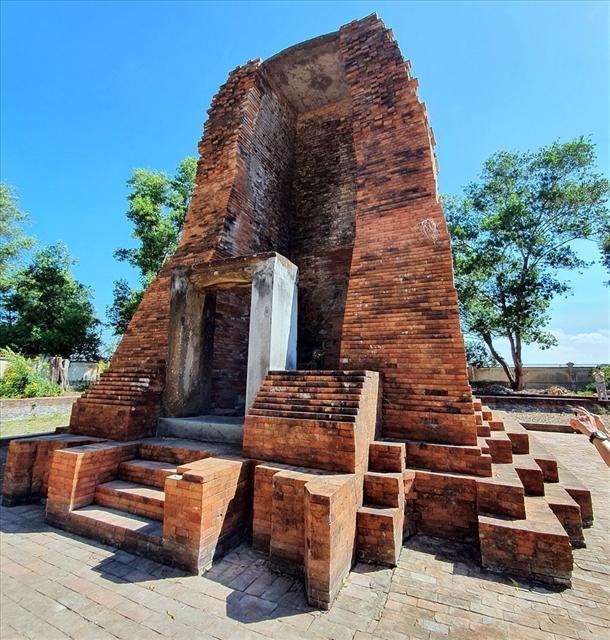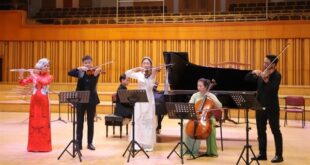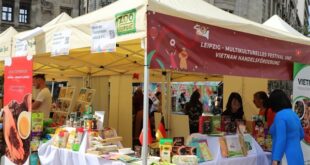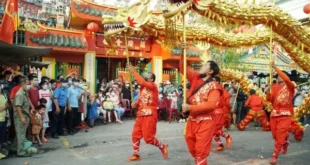 |
| The vestige of Vĩnh Hưng ancient tower in Vĩnh Lợi District, the southern province of Bạc Liêu, is one of the three newly sites recognised as Special National Heritage Relics. Photo baodantoc.vn |
HÀ NỘI Three relic sites have been recognised as Special National Heritage under decision signed by Deputy Prime Minister Lê Thành Long.
They include archaeological sites of Xóm Trại Cave and Mái Đá Làng Vành in Lạc Sơn District, the northern province of Hòa Bình; Vĩnh Hưng ancient tower in Vĩnh Lợi District in the southern province of Bạc Liêu; and historical Trương Định Uprising area in Gò Công and Tân Phú Đông districts in the southern Tiền Giang Province.
The Deputy Prime Minister assigned the Minister of Culture, Sports and Tourism and chairpersons of People’s Committees [administrations] at all levels where the reconigned relics are located to carry out state management of the relics according to regulations of law on cultural heritage.
Xóm Trại Cave, the most typical archaeologically important site of Hòa Bình Culture in Việt Nam, is located in the centre of Mường Vang region – one of the four biggest and popular Mường minority neighbourhoods in Lạc Sơn District. There tourists will have the opportunity to visit and learn about the Mường ethnic cultural space and the wonderful natural scenery of the Mường Vang Valley.
The cave was ranked at the national level in 2001 and has been recognised for many years for its archaeological significance.
Through researches, the overall stone artefacts show that the skills ancient people used to make stone tools were remarkably advanced.
The presence of a great number of large-sized tools has enriched the Hòa Bình Cultural relics set and for researchers is a good source to learn about the types of tools and the economic activities of the culture.
The additional discovery of rice grains and rice husks in the cultural layer of Xóm Trại Cave may be a physical evidence of early rice agriculture in Hòa Bình Culture. Currently, the cave relic has been embellished to welcome tourists and researchers.
Vĩnh Hưng ancient tower vestige is located in Trung Hưng 1B Hamlet, Vĩnh Hưng A Commune. It is the only tower architecture of the Óc Eo culture left in the southwest region.
During excavations at Vĩnh Hưng tower area, which was restored and renovated in 2011, archaeologists also obtained many extremely valuable artefacts with many statues made of stone, bronze, ceramics and precious stones. These artefacts show a long period of existence and development of the ancient tower from the 4th to the 13th century AD.
The Archaeological Research Centre coordinated with the Bạc Liêu Provincial Museum to excavate around the tower area in 2002 and then again in 2011.
Many valuable artefacts have been discovered during surveys such as the Goddess statue carved in the traditional style, the right hand of the God Statue and ceramic objects used in daily life.
The historical heritage of Trương Định Uprising sites include a temple of national hero Trương Định and Trương Định’s Tomb.
Born in 1820, at the age of 24, Trương Định followed his father to the south, recruited peasant migrants and established a hamlet in the Tân An Dinh Tường area. In 1859, when the French colonist army invaded Gia Định, Trương Định led a peasant uprising in Gò Công to fight against the invaders.
Việt Nam now has a total of 133 Special National Heritage Relics. VNS
- Reduce Hair Loss with PURA D’OR Gold Label Shampoo
- Castor Oil Has Made a “Huge” Difference With Hair and Brow Growth
- Excessive hair loss in men: Signs of illness that cannot be subjective
- Dịch Vụ SEO Website ở Los Angeles, CA: đưa trang web doanh nghiệp bạn lên top Google
- Nails Salon Sierra Madre
 VnExpress News The News Gateway of Vietnam
VnExpress News The News Gateway of Vietnam





